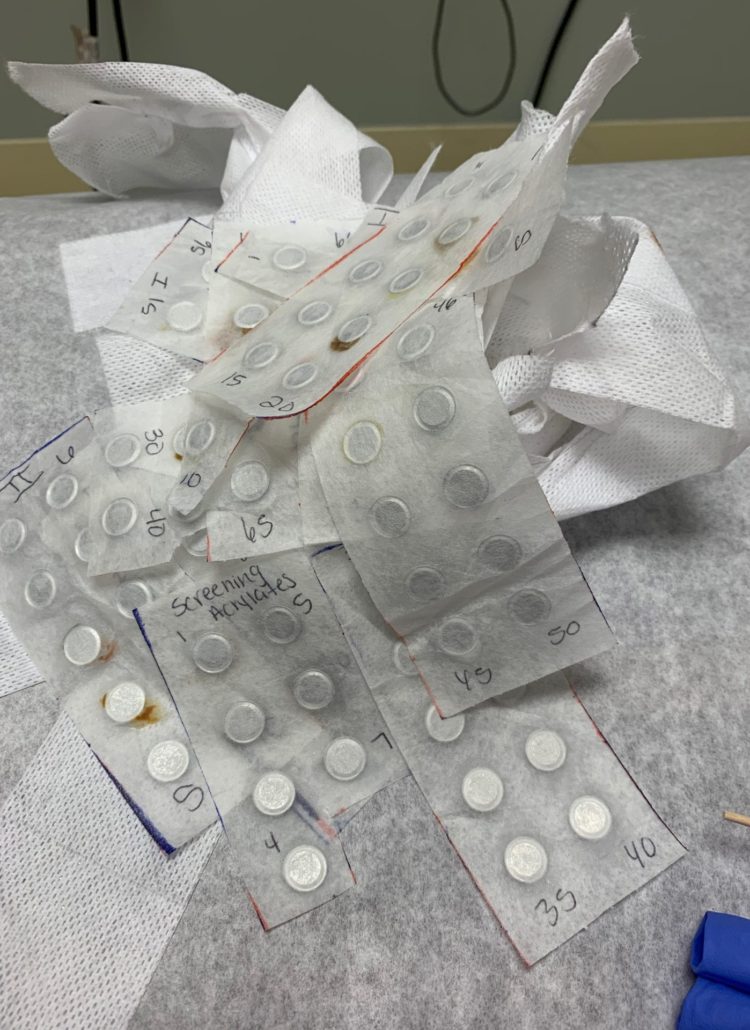
The road to Allergic Contact Dermatitis
Could dermatology patch testing for Allergic Contact Dermatitis help you? Have you had a recurrent rash or maybe had Eczema since you were a young child? Maybe you’ve used topical steroid creams for itch and rash for as long as you can remember, but it’s “ok” because it keeps your symptoms at bay. Maybe you even saw dermatologist after dermatologist for your rash (like I did before a proper diagnosis), but it’s just “eczema,” so it’s no cause for concern. It could be Allergic Contact Dermatitis, and a patch test can help.
About 16 years ago (although I think it might have been way back in my teen years), I began to notice patches on my eyelids and what I thought was just “scratchy dead skin” on my hands and knees, I had never heard of Allergic Contact Dermatitis or Patch Testing at the time. These patches on my eyelids would thicken and get crusty and itchy, and then the skin would go through a terrible healing process.
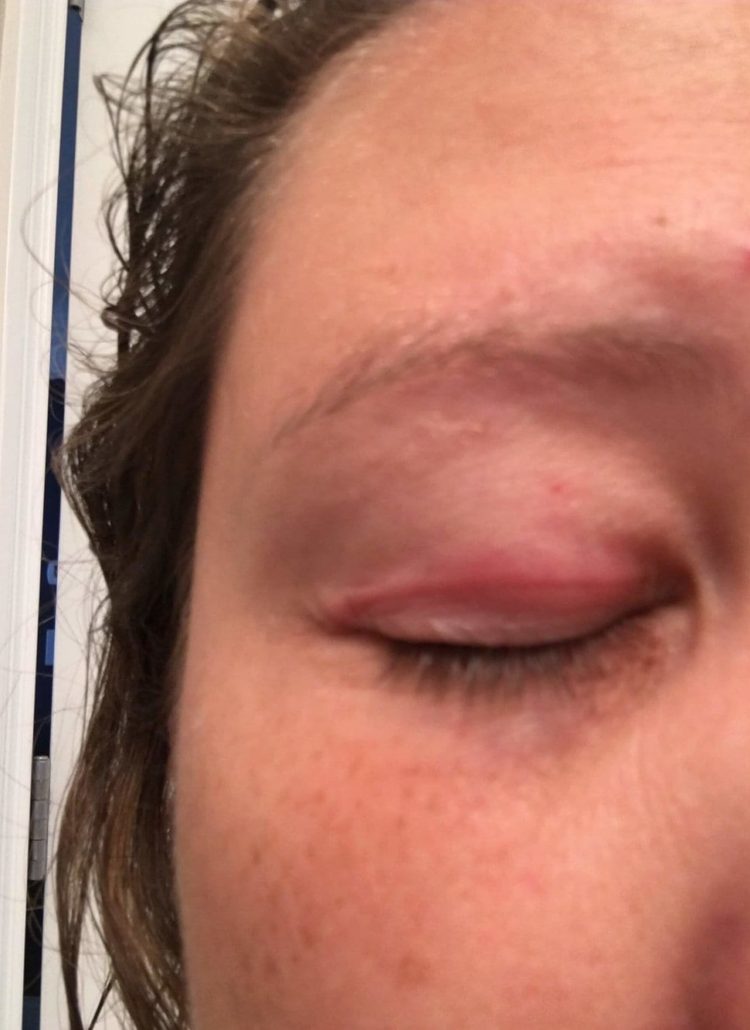
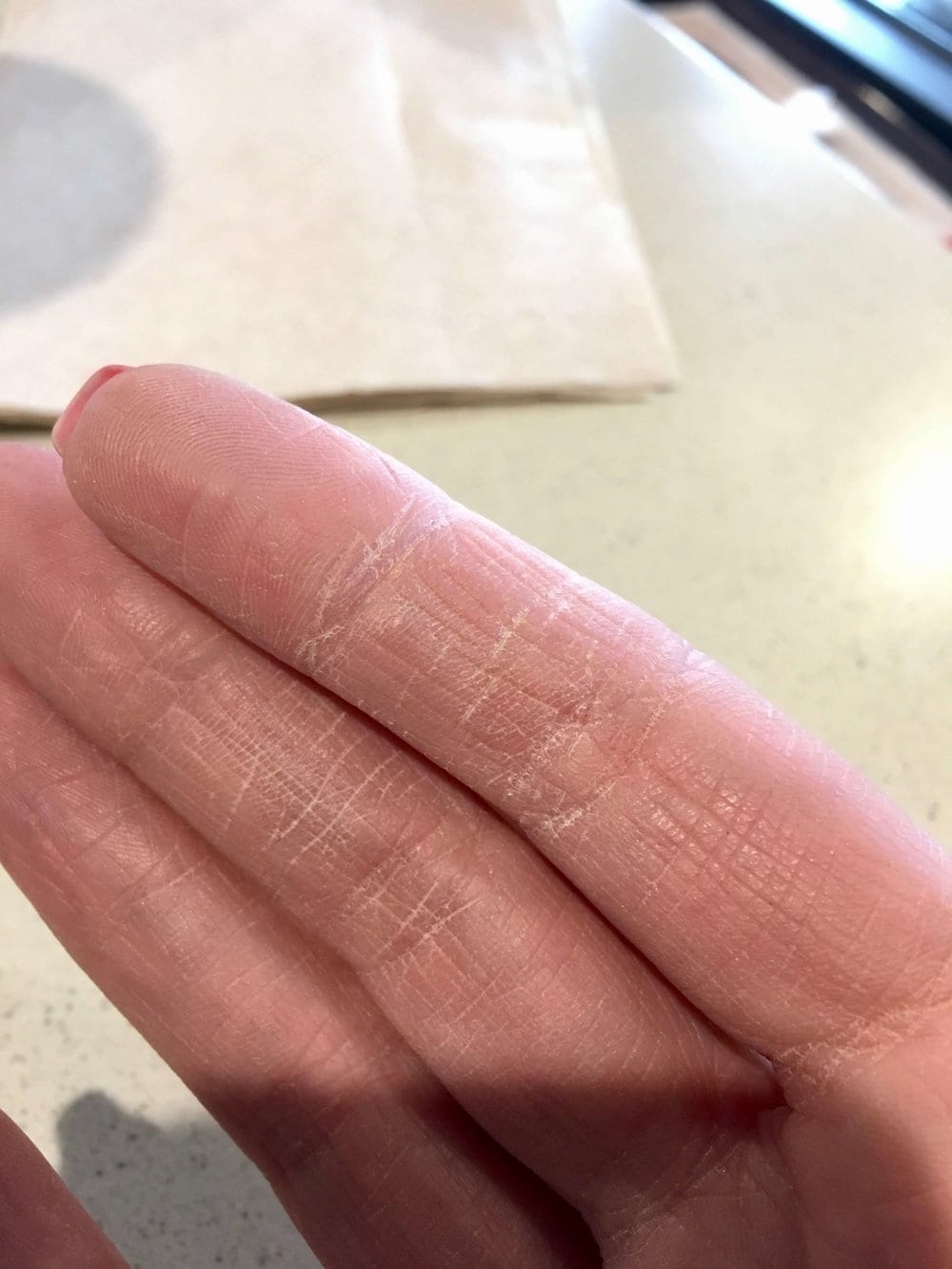
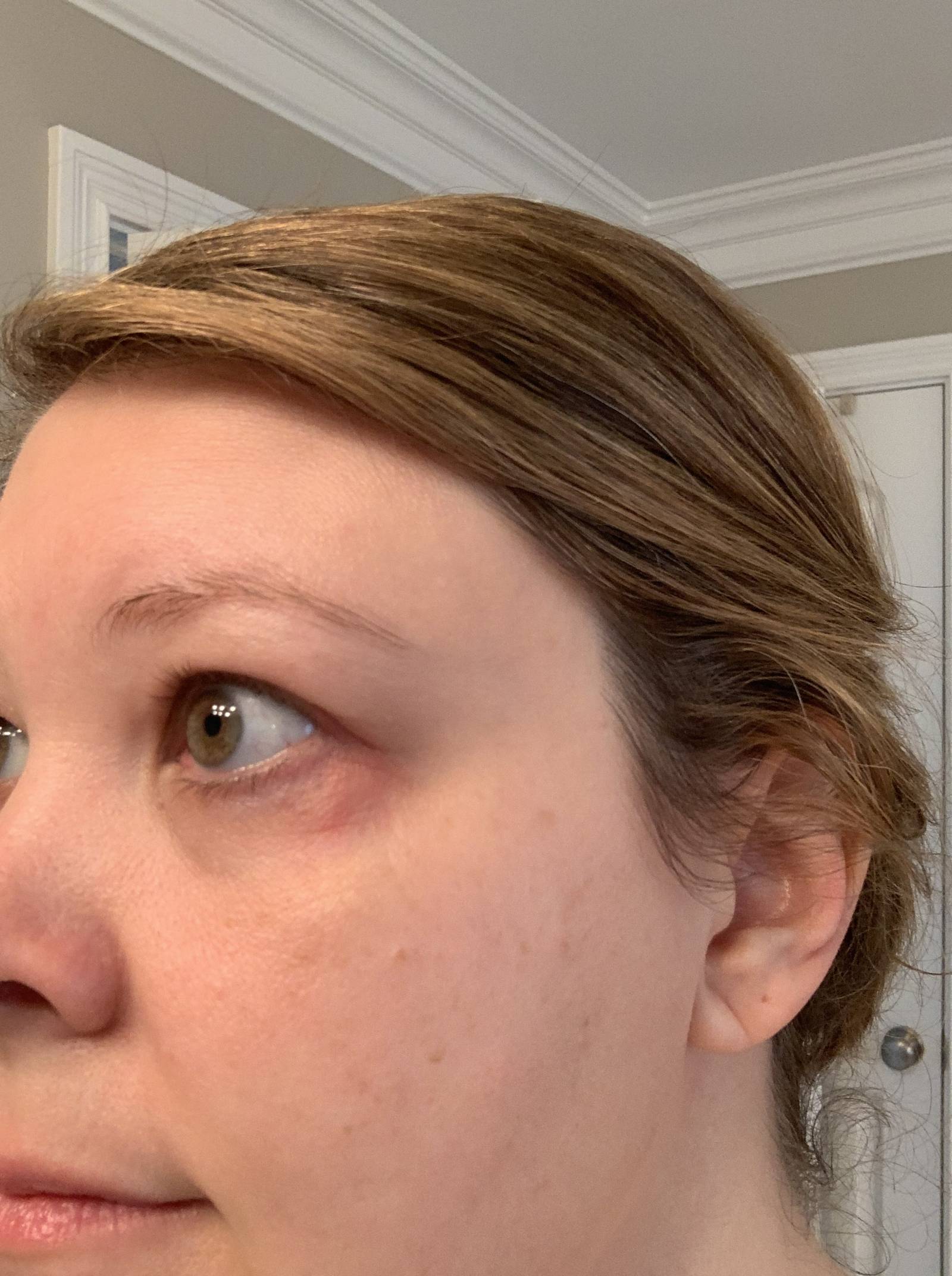
To me, it looked like I had packed on the eyeshadow heavy that day. I sought a dermatologist who told me it was most likely nail polish remover or maybe the eyeshadow I was using. The option to change brands was given. About a year later, I welcomed my second son into our family, and my itchy eyelids became much worse.
Dermatologist Visits with no explanation
I saw another dermatologist hoping for an explanation, and steroid creams were prescribed. Later that year, without relief and in a lot of misery, I went to my asthma/allergy doctor out of frustration. He felt confident what I was struggling with wasn’t in his field, and luckily he sent me to the local “patch test guru,” as he called him. I thought fantastic! Answer to all my problems.
My Personal Journey
In 2006, after the long, tedious dermatology patch testing process, I was diagnosed with three contact dermatitis allergens. The words Formaldehyde, Fragrance, and Gold allergies entered my world. My dermatologist handed me a simple paper with some crazy words on it. Avoid these ingredients, he said, and you’ll be much better. I had so many questions. How could Formaldehyde be in the products I was using? I only use high-quality skincare and salon-quality hair care. Fragrances, what does that mean? Is it just avoiding wearing perfume? How can I be allergic to Gold? I don’t even wear gold very often. Questions, I learned, weren’t something that his office answered a lot of at the time.
The dermatologist’s office gave me some smallish-sized samples of products by an allergy-free product company. To me, a lover of all things PERSONAL CARE PRODUCTS, I thought MY life was over. My hair felt coarse, dingy, and lifeless. Makeup – what would I do without makeup? OVER.
Lack of information available at the time
This was before the internet had really taken off. There wasn’t a lot of information out there readily available at my fingertips. SkinSafe, CAMP lists were not available to me. Learn to read ingredients! my patch test dermatologist told me. Ugh. Learn I did, but I didn’t have a complete idea of what I was trying to avoid at the time.
What is Patch Testing anyway?

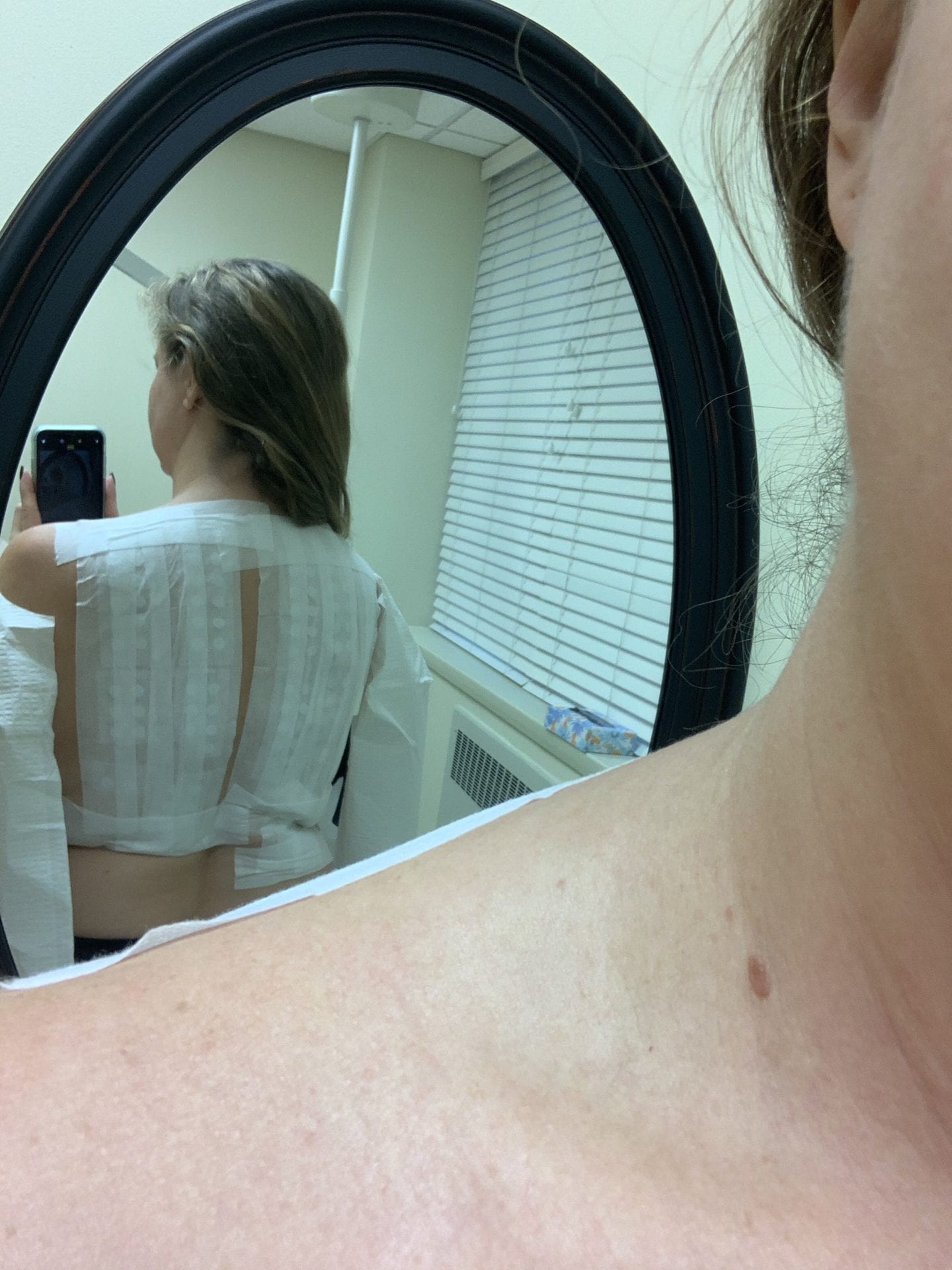
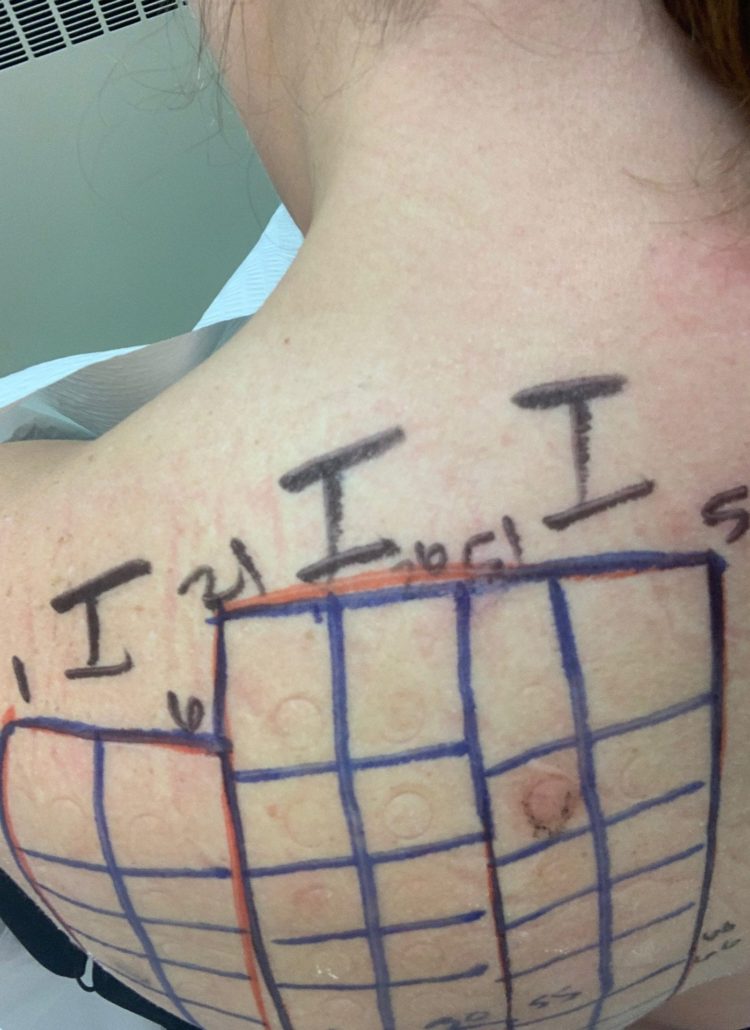
First, what patch testing is not. Dermatology Patch Testing is NOT skin prick testing, which an allergist does. I’ve had prick testing as well, and this is not that. Allergy Prick Testing is done on your back and is complete in a single visit. It tests your body’s histamine reaction to a substance placed just underneath your skin by pricking it open. Prick testing, while not PAINFUL, is uncomfortable, and this type of reaction is called Type I Hypersensitivity. Type I allergies are reactions related to histamine in your body. I talk about the different types of allergies/hypersensitivities in my blog post What is ACD? You can also watch this short YouTube video about Type IV hypersensitivity.
Ok, so now that we know what patch testing isn’t, what exactly is a patch test?
Histamine causes Type I allergies. T-cells mediate Type IV allergic reactions. Type IV allergies are a cell-mediated response. This response involves the interaction of T-cells in your body. Helper T-Cells recognizing an antigen (ingredient) as a foreign invader is the type of reaction you see on your skin in this type of reaction. These T cells then set out to destroy these foreign invaders on contact. This can present with damaged tissues and inflammation. The body deems an ingredient as an invader in a Type IV hypersensitivity.
It can all sound pretty confusing, but it’s a case of identity theft! Your body has decided that an ingredient safe for most is not safe for you. This can happen in several ways, but generally, it’s an ingredient you’ve used daily for years, and the repeated exposure has now set you up for Allergic Contact Dermatitis. It’s why we should be cautious with ingredients patch tests dermatologists know can be the most irritating to the skin as that’s the first step to becoming sensitized.
Variety of Patches
Patch tests don’t use needles like a prick test. In a dermatology patch test, your back receives patches containing allergens and individual personal care products. During a patch test, your skin may be exposed to up to several hundred extracts of substances that can cause contact dermatitis. These can include latex, ingredients in medications, fragrances, common personal care preservatives, metals, resins, and common workplace-related allergens.
Patients wear these patches on their backs for 48 hours. You must avoid anything that can cause you to sweat and no bathing/showering during this time. You return to your patch test dermatologist’s office to have them removed. Your patch test derm will mark your back like a map when they remove your patches. Best to have a family member take a photo of your back from many angles with clear pictures. This will help you in the future. You will then leave and return 48 hours later for a final read of your patches.
Patch Test Pro Tips
- Bring any products you use daily with you to your initial appointment. Also, take pictures of reactions you may have to share with your dermatologist. They can only help you if they know the full context of what you are dealing with.
- Take clear pictures of your back “map” on day 3. These pictures will be a guide for you in the coming days. Any red/irritated spots showing on Day 3 are considered irritants. In my experience, avoid irritants in addition to true allergens. Irritants can often become full-blown allergens in the years to follow with recurrent use.
- Request a detailed “map” of what allergen is placed in each location on your back to associate it with your photos. You, after all, can only be your best advocate if you have all the information. These are YOUR medical records. Politely ask for all of the detailed sheets related to your patch test, including dr notes. I did this more than 10 years after my initial test and was stunned to find all of my allergens were not disclosed to me.
- Be sure to have a family member take a back picture every day of your “map” for up to 2 weeks after your final read. It is not uncommon to have very delayed reactions. If you notice one, note it and contact your patch test dermatologist. Some patch areas where you are extremely allergic to the allergen can linger for weeks and even months at times. This is normal.
- Finally, find a patch test dermatologist who can do thorough patch testing. If you are only given 20-30 patch tests (or a TRU Test), you may truly be missing the full picture of your allergic contact dermatitis allergens. Do it once and do it right!
How do I find a Patch Test Specialist?
You may know someone who requires specialized patch testing for Allergic Contact Dermatitis; maybe it’s you! In Louisville, Kentucky, where I am, my fantastic patch test dermatologist is Dr. Todd Rickett at Forefront Dermatology. You can find a local-to-you-guru at www.contactderm.org
Good Luck! I am in your corner!


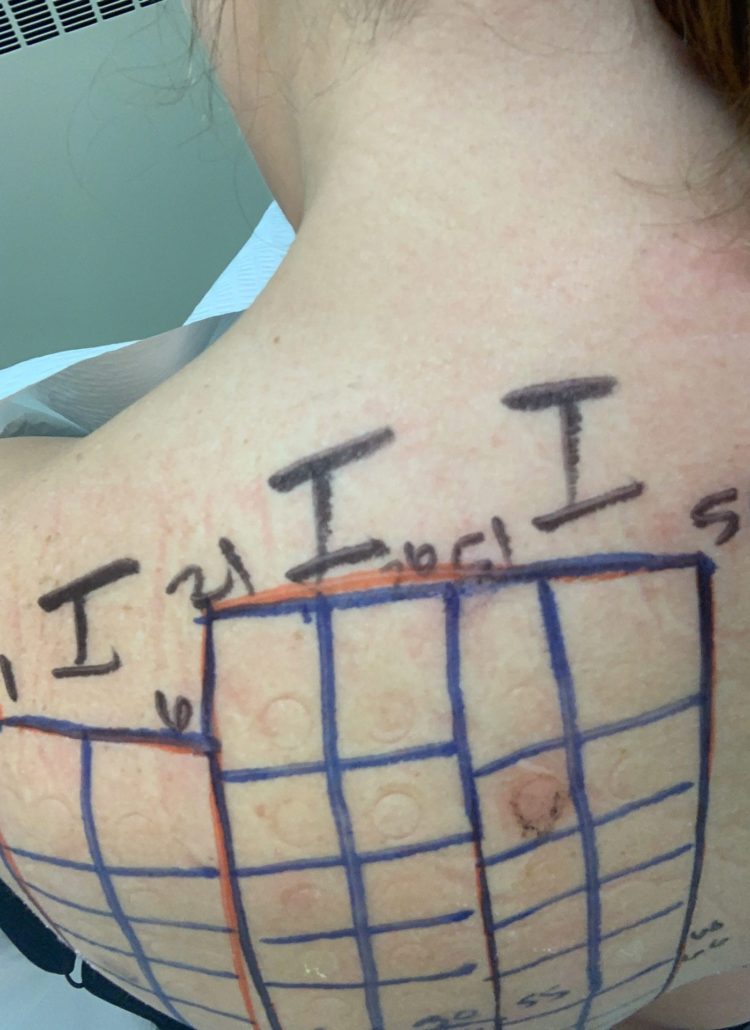
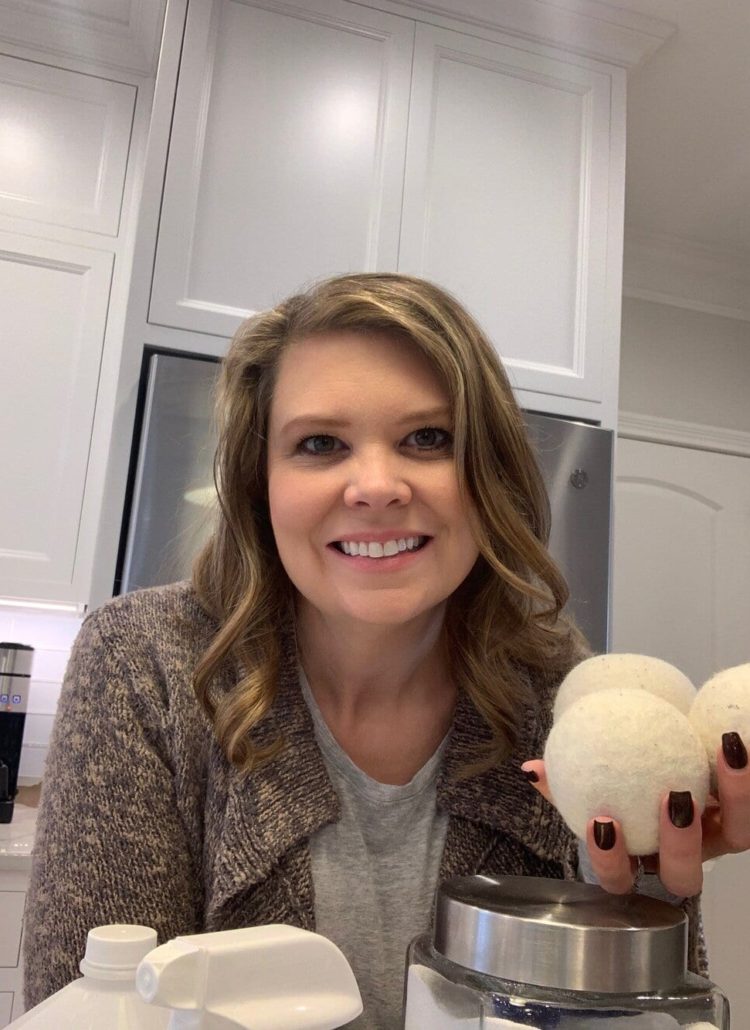
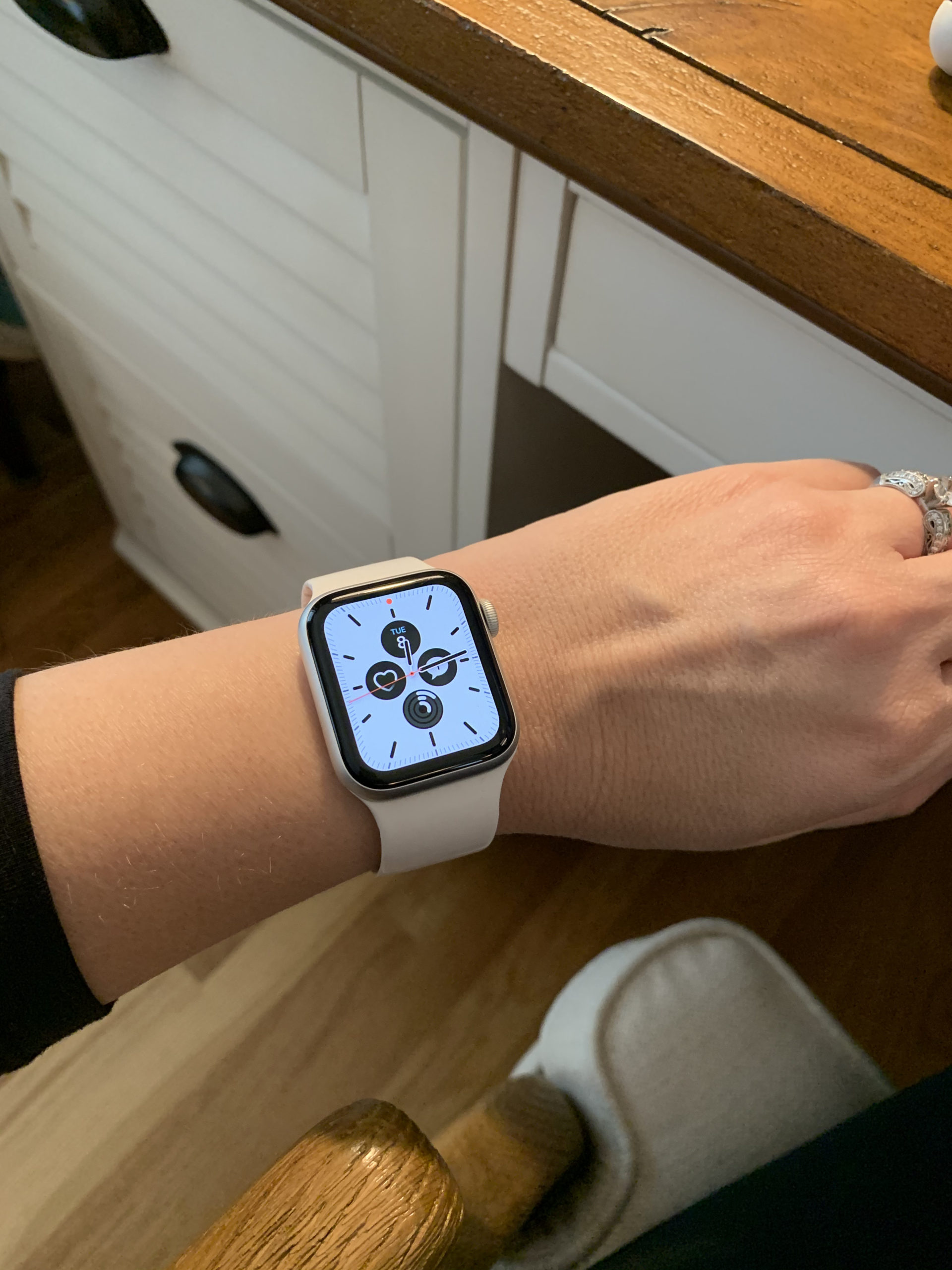
Holly says
I have been through patch testing twice now. I have always had sensitive skin, but started with a reoccuring rash around my hands and wrists after the birth of my daughter. I suffered for a long while before seeking out help. I have allergies to Balsam of Peru, Cinnamic Aldehyde, Oleamidopropyl Dimethylamine, Linalool and Propylene Glycol. This cocktail of allergens make it so hard to find products that are safe for me. And there is so little information out there for those of us that suffer. I really appreciate you sharing your knowledge to help others. We really are a community of people that can learn from each other even though we all have unique reactions and allergens. Education is key. So glad I found your blog!
Lori says
It is so nice to find similar people who speak my language! Very grateful for this blog
theallergylife says
Thank you!!! I’m so happy you’re here. ~Dannyelle
Deborah Thomas says
I’m having a patch test the end of September. No one explained anything as to what this is all about & what is done. I was scared until I read this article. I had the skin prick test three or so weeks ago. My dermatologist is preparing my allergy serum for my shots. When I go for this patch test does anyone need to go with me? I’m about 45-50 mins. from where I get my test. Carolina Asthma & Allergy in Monroe, NC is where I go but my patch test is in Charlotte NC. Thanks so for the information, I’m not as scared now. I don’t think ??
Nancy says
Oh my gosh Dannyelle – I KNEW while I was reading this blog post that you HAD to be from Louisville, because the way you described your experience with your patch test sounded exactly like my experience with a particular Dr. “F” here in Lou. “My dermatologist handed me a simple paper with some crazy words on it. Avoid these ingredients, he said, and you’ll be much better.” EXACTLY!
It is now at least 10 years later and naturally, I still have the allergies. I had no idea I could ask for the detailed sheets regarding my patch test! That doctor was so dismissive, I didn’t feel comfortable requesting more information and when my allergies continued I felt at fault for not reading the ingredients thoroughly enough.
I have itchy scalp and an itchy area on my face that drives me insane. I will make an appointment with Dr Ricketts (who I’m already familiar with) and have the test redone as I’m sure it was the TRU test I had previously.
I found you bold while researching shampoos without cocamidopropyl betaine, so I’ve ordered the shampoo you recommended, but I imagine this goes further than just my shampoo.
Thank you so much for your excellent website!
Nancy says
*your blog! Not “you bold”